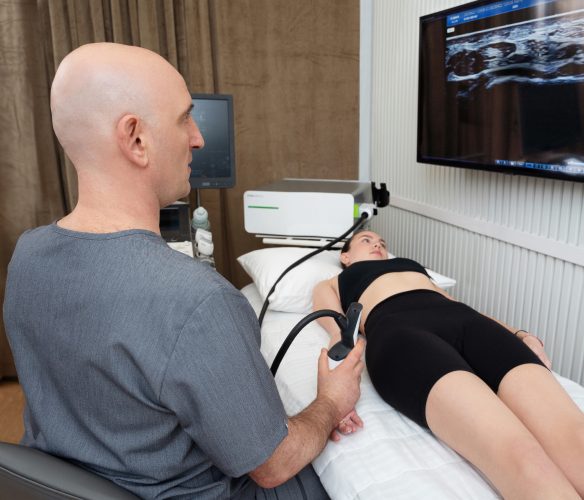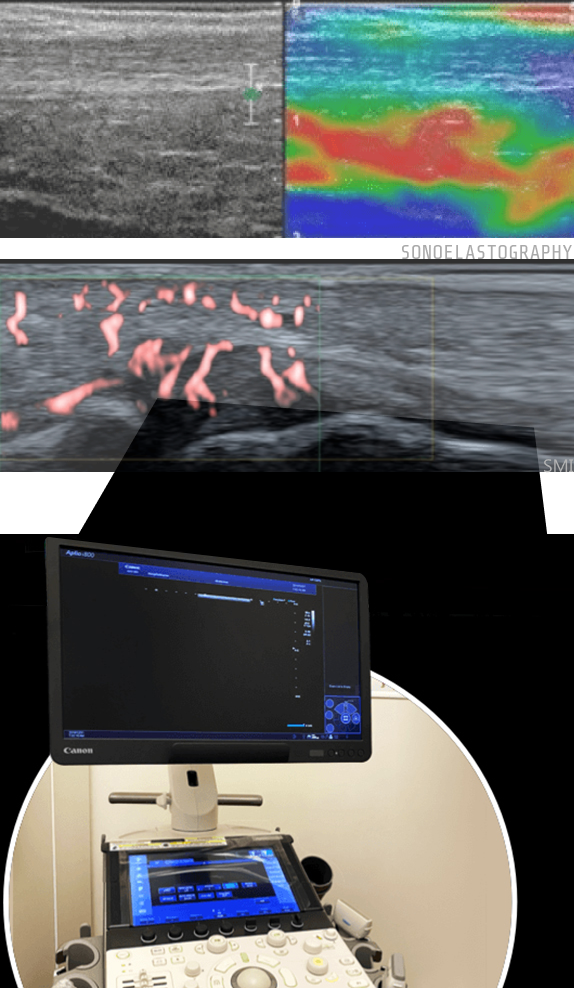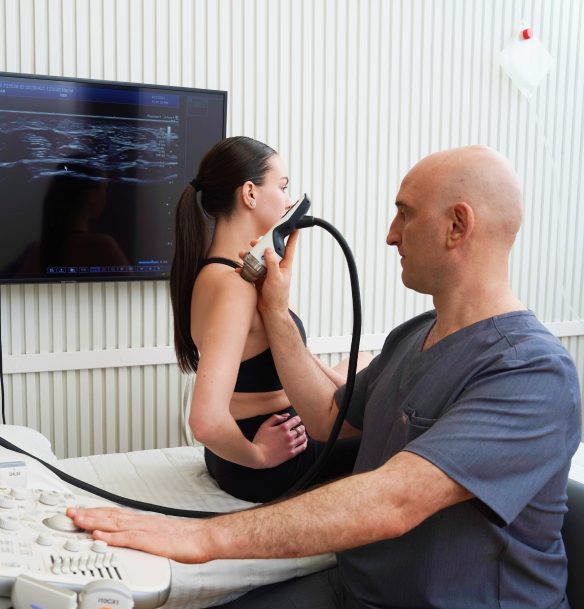Most people are familiar with ultrasound imaging as a safe and convenient tool for viewing babies in the womb, but ultrasonography has much broader applications for human health. When used for diagnosis and treatment of musculoskeletal injuries and disorders, high resolution musculoskeletal ultrasound (MSUS) imaging is a game-changer for restoring pain-free movement.
or
NYDNRehab clinical director Dr. Lev Kalika is an internationally recognized expert in diagnostic and musculoskeletal ultrasound imaging, with multiple research papers to his credit. Dr. Kalika has studied with some of the world’s most prestigious experts in diagnostic ultrasonography, and has attended multiple international conferences on the topic.
Ultrasound imaging has multiple advantages over other imaging tools like MRI, Xray and CT scan:
As a New York ultrasound practitioner, Dr. Kalika is an active member of the American Institute of Ultrasound in Medicine (AIUM), and is currently developing his own unique approach to Dynamic Functional Ultrasonography.

Modern technology has opened the doors to countless new approaches for diagnosing and rehabilitating injuries, pain syndromes, and movement disorders. However, most physical therapy clinics still rely on symptoms-based diagnosis, one-size-fits-all recovery timelines, and cookie-cutter treatment methods that often miss the mark, prolonging pain and suffering without resolving the underlying causes of pain and dysfunction.
At NYDNRehab, we believe that what cannot be measured cannot be successfully treated. In order to precisely diagnose and treat your condition, our clinic features some of the most advanced technologies in the world.
A quick and accurate diagnosis means your treatment protocol can be precisely tailored to your needs. Our growing collection of high-tech tools lets us monitor your progress based on hard data, and adjust your treatment as needed.
Our personalized one-on-one approach means that you will receive the very best care for your condition. Our goal is to get to the root of your problem as quickly as possible, and set you on the road to recovery, so you can get back to doing the things you love.


Accurate diagnosis is key to successful treatment. Symptoms play an important role, but being able to visualize your body’s structures in real time, with your feedback, gives us a “look under the hood,” to see what’s really going on.
Many conditions share the same symptoms, and a symptoms-based diagnosis can lead to the wrong treatment, prolonging your pain and costing you time and money.
Our New Aplio i800 ultrasound equipment renders the highest resolution images possible, giving us a crystal-clear look at your soft tissues, nerves, bones and joints.
Unlike static images taken by Xray or MRI, diagnostic ultrasound lets us visualize structures beneath the skin’s surface, with the patient in motion.
Ultrasound lets us travel the length of long structures like nerves, bones and muscles, to identify anomalies and pinpoint the scope and extent of damaged tissues. It also allows us to quickly compare damaged tissues to healthy tissues on the patient’s uninjured side, to optimize diagnostic results.
Once we diagnose your condition, we can get right to work on your treatment plan — no need to wait to get images back from the lab!
Sonoelastography enables us to evaluate the elasticity of muscles, ligaments and tendons. Tissue stiffness is a mechanical property that indicates the overall health of soft tissues. Therapists have traditionally relied on manual palpation to detect damage to soft tissues, but even the most skilled therapist can only guess at the extent of damage.
Sonoelastography provides us with quantitative data that we can use to establish a baseline and track tissue healing throughout the rehabilitation process.
Sonoelastography lets us see beyond gray-scale images to:
Visualize myofascial trigger points
Detect thickening or fibrosis of the fascia
Monitor pre- and post-treatment elasticity for physical therapy, dry needling, injection procedures, shockwave therapy, and more.
Superb Microvascular Imaging (SMI) lets us detect early microvascular flow in very small vascular structures. Structures like ligaments, tendons and fascia have limited vascularity, and are therefore slow to heal. Our regenerative technologies are designed to stimulate cellular repair and enhance blood flow to damaged tissues. SMI lets us detect early signs that our treatment plan is working, and SMI gives us a tool for monitoring all stages of the healing process.


In addition to its important role as a diagnostic tool, high-resolution ultrasonography provides us with a training tool for restoring neuromuscular pathways and re-establishing optimal muscle firing patterns.
Injuries from trauma and overuse can lead to compensation patterns that serve to unload damaged tissues as they heal. Once established, those patterns are difficult to correct without specific motor feedback training. Ultrasound lets the patient visualize the muscles during movement, to retrain the brain to activate specific muscles in a coordinated sequence.
Ultrasound-guided feedback retraining helps athletes to restore optimal muscle firing patterns, to ensure peak athletic performance and dramatically reduce the risk of re-injury.
Injury rehabilitation takes time, and at NYDNRehab, we believe that time should not be wasted on misdiagnosis and ineffective treatment methods based on diagnostic guesswork. Our cutting-edge ultrasonography equipment and tools take the guesswork out of diagnosis, allowing us to design a personalized treatment plan that accelerates your recovery. Contact NYDNRehab today, and see why we are Manhattan’s ultrasound provider of choice in NYC.


Сurrently Dr.Kalika is enrolled in Post Graduate University Degree of Expert in MusculoSkeletal Ultrasound By Barcelona University
Dr. Lev Kalika is a world-recognized expert in musculoskeletal medicine. with 20+ years of clinical experience in diagnostic musculoskeletal ultrasonography, rehabilitative sports medicine and conservative orthopedics. In addition to operating his clinical practice in Manhattan, he regularly publishes peer-reviewed research on ultrasound-guided therapies and procedures. He serves as a peer reviewer for Springer Nature.
Dr. Kalika is an esteemed member of multiple professional organizations, including:Independent peer-reviewed research relevant to this treatment approach.